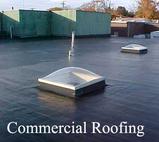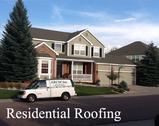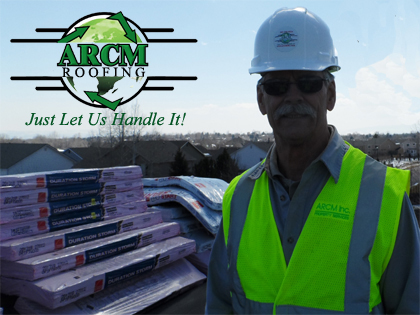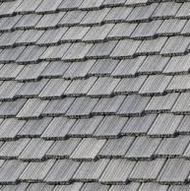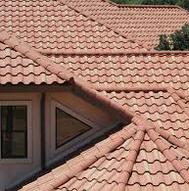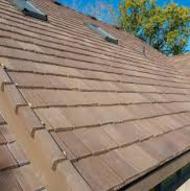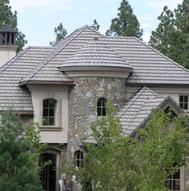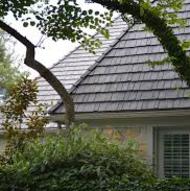FACTS OF TILE
When comparing tile roofs and shingle roofs, the first noticeable difference is the price. Tile is more expensive than shingles, usually at least double the price. However, the life expectancy of tile ends up being about double that of shingles, so it works out to be about even in that regard. Because each tile is individually attached, tile is easy to repair or replace. Installation and maintenance costs over time are lower than other roofing materials because concrete tile is made to last for generations
Design
A Wide variety of colors Concrete and clay tiles are manufactured in a wide array of colors, from light shades to dark or multi-colored, making it easy to coordinate your roof with exterior colors. ARCM works exclusively with the manufacturer of Bartile, a company base in Utah. Bartile offers custom colored roofing tiles to exactly match the color you want.
Concrete and clay tiles are manufactured in a wide array of colors, from light shades to dark or multi-colored, making it easy to coordinate your roof with exterior colors. ARCM works exclusively with the manufacturer of Bartile, a company base in Utah. Bartile offers custom colored roofing tiles to exactly match the color you want.
Full range of profiles and styles
Clay roof tiles are available in traditional two-piece styles, one-piece profiles, and flat profiles.
Clay tile designs are either overlapping or interlocking, with protruding lips that lock the tiles together and form a weather seal.
Many flat clay tiles interlock. Interlocking designs are recommended for regions with heavy rain or snow. Manufacturers provide special trim tiles to seal the voids formed at ridges, rakes, and hips.
Pan and Cover Style Clay Roof Tiles
This traditional two-piece style, also called barrel- or Mission-style clay tile, is installed in pairs with the cover tile overlapping the pan tile. It provides an attractive high-profile look but is labor-intensive and expensive to install. ARCM professional Tile Roofing Installers have the ability to install this style if it is the look you want.
Variations include Roman and Greek profiles, which have flat, rather than curved, pan tiles. Tiles typically range from 8 to 12 inches in width and from 16 to 19 inches long.
Spanish S-tile Clay Roofing Tiles
Spanish S-tiles used on roofs are one-piece tiles provide the high-profile look of traditional pan-and-cover tile but with simpler installation. The most popular S-tiles measure about 13 inches wide by 16 1/2 inches long. Other common sizes are 8 3/4 x11 and 9 x14 inches.
Flat Shingle Style Clay Roof Tiles
Flat shingle style clay roofing tiles are laid in a double thickness, like slate. These clay roof tile widths range from 6 to 8 inches, lengths from 12 to 18 inches.
Increased value
Long term durability
Tile roofs have the lowest life cycle cost of any other roofing material. Centuries old tile roofs are still enduring today.
Fire resistance Class A fire resistant as a product and a system.Class A roofing materials are the most fire-resistant. For residential buildings, concrete or clay tiles are fireproof, durable roofing materials. Often used for Spanish, Southwest and Mission architecture, the concrete or clay rounded tiles are heavy and require additional structural support. ARCM provides engineering reports and makes sure your tile roof is installed with the required batten system.
Class A fire resistant as a product and a system.Class A roofing materials are the most fire-resistant. For residential buildings, concrete or clay tiles are fireproof, durable roofing materials. Often used for Spanish, Southwest and Mission architecture, the concrete or clay rounded tiles are heavy and require additional structural support. ARCM provides engineering reports and makes sure your tile roof is installed with the required batten system.
Wind Resistance
One of the best attributes of concrete and clay tile roofing is its resistance to severe storms and hurricane-force winds. Its design and construction provide high air permeability, which helps relieve wind stress. Independent testing sponsored by the Tile Roofing Institute has shown that with proper attachment, clay and concrete roof tiles can sustain winds in excess of 125 miles-per hour that would have stripped off most other roofing materials.
Hail resistance
Tile roofs have an added layer of protection built in: the tile itself provides a tough, watershedding outer shell with the underlayment working as an extra shield. Tiles have been tested according to FM4473 for hail resistance ratings. Concrete and clay tiles can resist damage from hailstones as large as 2″ – which is larger than a golf ball.
Sustainability
Tile roofs have the lowest life cycle costs based upon the life of the roofing material and required maintenance.
Environmentally friendly
Materials do not deplete limited natural resources and have no chemical preservatives used in the production; all waste can be recycled and does not go into land fills; tile roofs’ long life reduces the need for reroofing that clogs landfills unnecessarily.
Reflectivity
Independent testing performed at the Department of Energy’s Oak Ridge National Laboratory has demonstrated that tiles have the ability to cut the transfer of heat compared to other roofing materials such as asphalt shingles by up to 70%.
Natural air flow
Energy Cost Savings Natural air flow described above keeps heating costs low in the winter and cooling costs low in the summer.
Natural air flow described above keeps heating costs low in the winter and cooling costs low in the summer.
Other
Ease of installation
Tile roofs are one of the simplest systems to install for the fully trained Tile Roofing Installers at ARCM Roofing. Installation and maintenance costs in the long run are much lower than other roofing materials.
Easy to maintain and Repair
Tiles are easiest to repair because they are individually installed. ARCM Roofing provides maintenance plans and affordable repairs for any tile roof.
ARCM Roofing Inc. 7061 South University Blvd. Centennial, 80122 303-306-8334
Integrity - Honesty - Dependability - Peace of Mind - Local - Licensed - Insured - Bonded


